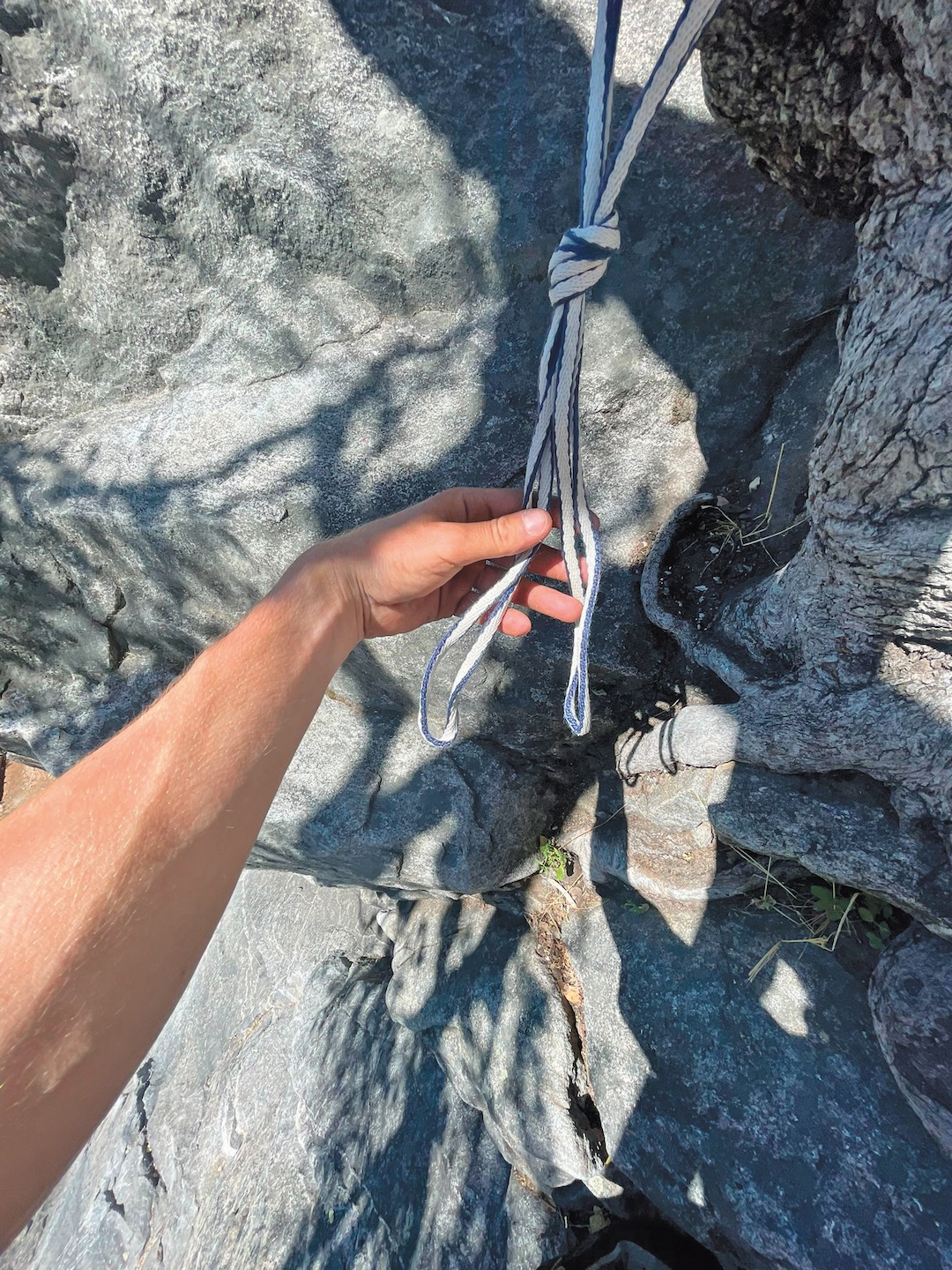Anchor Failure — Inadequate Knot
California, Yosemite National Park, Manure Pile

On June 24, during the United in Yosemite Climbing Festival, a climber led the first pitch of After Six (5.7). At the belay tree, they set up a lowering anchor using a knot on a quad-length sling with two locking carabiners. The climber weighted the rope and lowered. He cleaned the top piece of gear (a camming device). Below, a second cam proved too tight to remove so he unclipped it. The climber continued to lower. At the third piece from the top, the anchor knot failed. The climber fell 80 feet before the belayer caught his fall, when the climber was about five feet above the ground. The climber was lowered and SAR was called. His injuries included a sprained ankle, lacerations on the face, a broken nose, and rope burns on the hands and fingers.
ANALYSIS
The climber was fortunate that he had high protection that stopped him from hitting the ground when the anchor failed and lots of slack was introduced into the belay system.
The anchor sling was found with an intact overhand knot. The belayer, who wishes to remain anonymous, wrote to ANAC: “We believe it was an attempted overhand knot but it was actually a slipknot.” The still-locked masterpoint carabiners were found clipped to the rope by the fallen climber.
*Editor’s Note: After analysis, it was determined that the climber had attempted to tie an overhand knot but failed to pull the two end strands completely through the knot. He then clipped the two locking carabiners through the unsecured loops. Since there were so many strands of webbing in the mix, it was hard to tell the difference between a fixed loop and a slip loop. When weighted, the slip loops had sufficient friction and compression to hold, if only momentarily, while the ends gradually crept toward release. (Sources: Anonymous and ANAC Canada Editor Robert Chisnall.)

